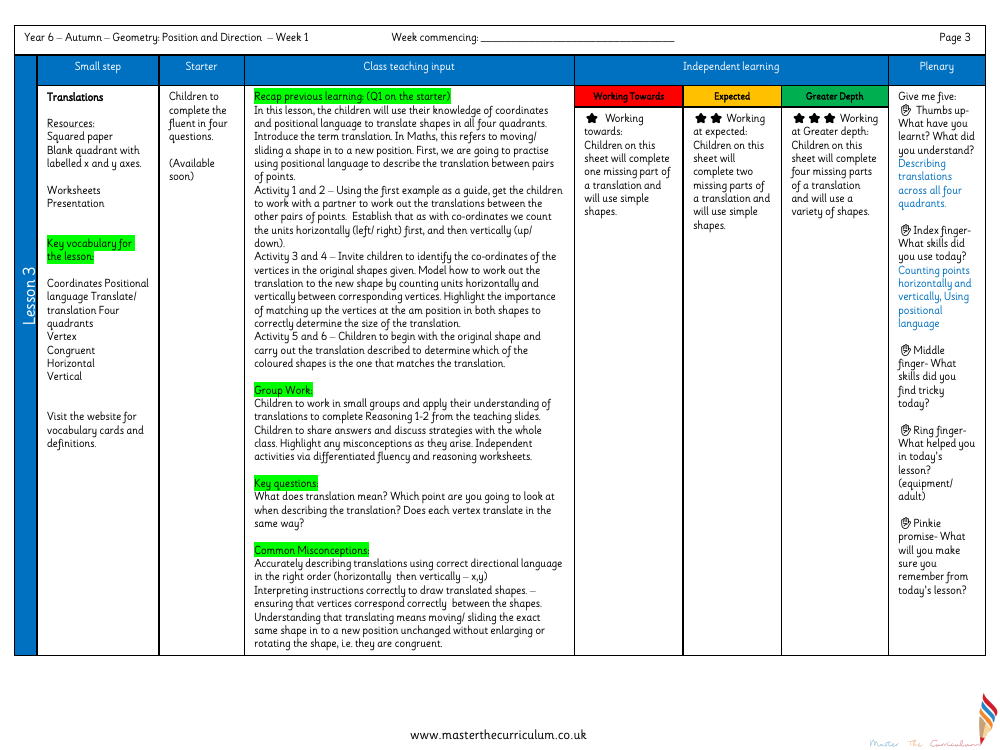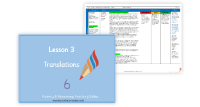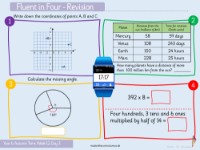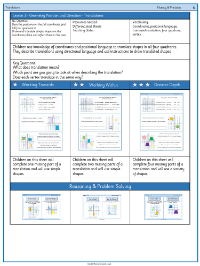Position and Direction - Translations - Planning

Maths Resource Description
In a Year 6 geometry lesson on translations, students are introduced to the concept of moving shapes on a grid using coordinates and positional language. The lesson utilises squared paper and a blank quadrant grid with labelled x and y axes, alongside worksheets and a presentation to facilitate learning. Key vocabulary such as 'coordinates', 'translation', 'quadrants', 'vertex', 'congruent', 'horizontal', and 'vertical' are emphasised, with resources available for vocabulary cards and definitions. The lesson begins with a starter activity that recaps previous learning and then moves on to class teaching input, where the term 'translation' is explained as the sliding of a shape to a new position without altering its size or orientation.
During the lesson, students engage in various activities to practise using positional language and to understand how to translate shapes across all four quadrants of the grid. They work in pairs to determine translations between points, ensuring they count units horizontally before vertically. Further exercises involve identifying coordinates of vertices and translating shapes by matching corresponding vertices to determine the translation's magnitude and direction. In group work, students apply their understanding to solve reasoning problems and share their strategies, addressing any misconceptions. The lesson concludes with a plenary where students reflect on what they've learned, the skills they've used, and what they found challenging. Differentiated worksheets cater to varying levels of proficiency, from working towards basic translations to achieving greater depth by translating a variety of shapes.



